An Easy to Build Cabinet for Storage on Wheels
Since the tree fell on the house, space is truly limited… We didn’t reinstall the oven in the new “kitchen” because there is no room for it, so we’ve opted to use a toaster oven. The only issue we faced with the toaster oven is a place to store it where it can be accessed easily and isn’t in the way taking up counter space that we really don’t have! I decided to build a rolling storage cabinet that the toaster over could sit on with storage for other appliances inside. It’s perfect for us since we didn’t use the regular oven that often in the old kitchen and the cabinet can easily move to another location.

The width and depth of the DIY rolling cabinet is actually based on two pieces of the wood grain ceramic tile, while the height is the same as the existing cabinets. A toaster oven cannot sit directly on a wood surface because it gets hot. The tile was extremely inexpensive and easy to glue into place with an adhesive for tile. The tiles are sold as 6″x24″ but actually measure approximately 5-3/4″ x 23-5/8″: the plan can be adjusted accordingly for different sizes of tile!
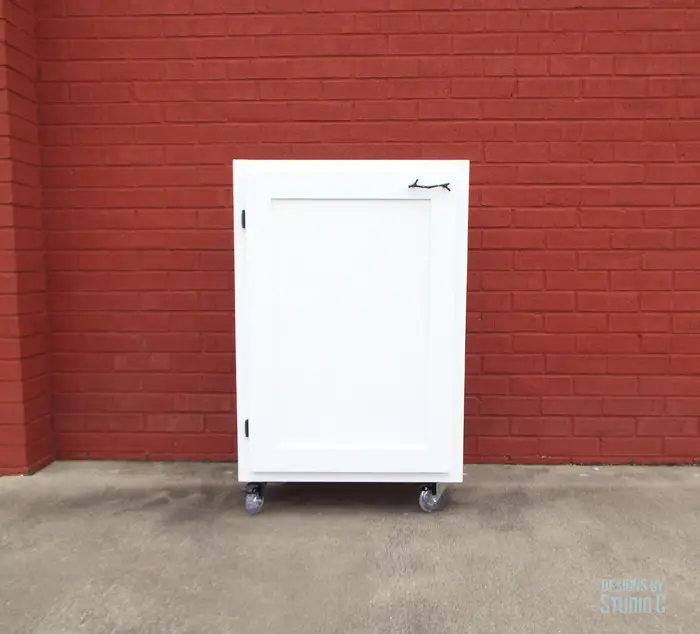
Materials:
- 1-1/4″ pocket hole screws
- 1/2″ brad nails
- 1-1/2″ brad nails
- 2 sets of hinges (I used Partial Wraparound with a 1/4″ overlay)
- Cabinet pull
- 1 set of four 3″ casters with 3/4″ screws
- Wood glue
- Sandpaper (80, 120, 220 grits)
- Finishing Supplies
Lumber:
- 2 – 1×2 at 8′
- 1 – 1×3 at 8′
- 2 – 2′ x 4′ sheets of 1/4″ plywood
- 1 – 4′ x 4′ sheet of 3/4″ plywood
Cut List:
- 2 – 3/4″ plywood at 11-7/16″ x 33″ – Case Sides
- 3 – 3/4″ plywood at 11-7/16″ x 22-1/4″ – Case Top, Bottom & Shelves
- 2 – 1×2 at 20-3/4″ – Face Frame
- 2 – 1×2 at 33-1/4″ – Face Frame
- 1 – 1/4″ plywood at 23″ x 32-1/4″ – Back
- 2 – 1×3 at 16-1/4″ – Door Frame
- 2 – 1×3 at 30-3/4″ – Door Frame
- 1 – 1/4″ plywood at 16-3/4″ x 26-1/4″ – Door Panel

Notes About the Project:
The top of the face frame will sit 1/4″ higher than the top of the case to accommodate the profile of the tile.

Step One
Cut the pieces for the sides, top and shelf. With the pocket hole jig set for 3/4″ material, drill pocket holes in each end of the top, bottom and shelf. Assemble the case using glue and 1-1/4″ pocket hole screws.

Step Two
Cut the piece for the back. Secure the back to the case using 1-1/2″ brad nails.
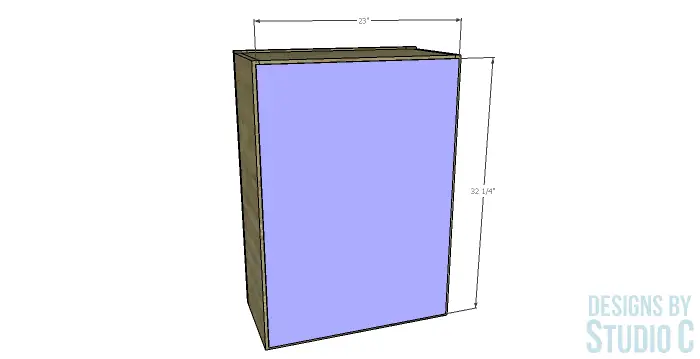
Step Three
Cut the pieces for the face frame. Drill pocket holes in each end of the shorter pieces. Assemble the frame using glue and 1-1/4″ pocket hole screws.
Position the face frame on the case with the sides and bottom flush. (Remember: the top of the face frame will sit 1/4″ higher than the case.) Secure in place using glue and 1-1/2″ brad nails.
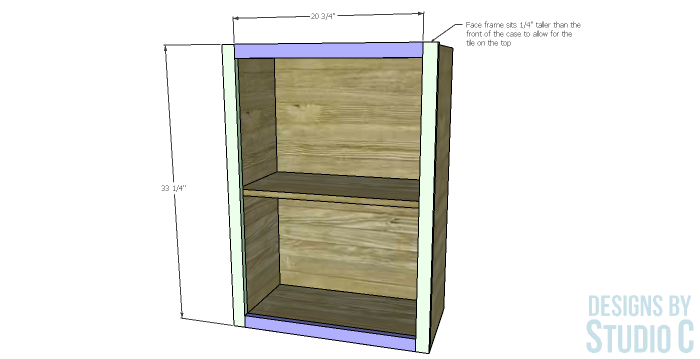
Step Four
Cut the pieces for the door frame and drill pocket holes in each end of the shorter pieces. Assemble the frame using glue and 1-1/4″ pocket hole screws.
Using a router and a 1/4″ rabbeting bit, cut a 1/4″ deep rabbet along the inside back of the frame to accommodate the panel. Use a chisel to square the corners so the frame will fit (the corners of the panel can also be rounded.)

Cut the 1/4″ panel to fit, then secure to the door frame using glue and 1/2″ brad nails.

Finish the cabinet as desired, then install the door following the manufacturer’s installation instructions for the hinges. The door will overlap the opening by 1/4″ on all sides.
Step Five
The casters will be secured to the bottom of the case using 3/4″ screws.
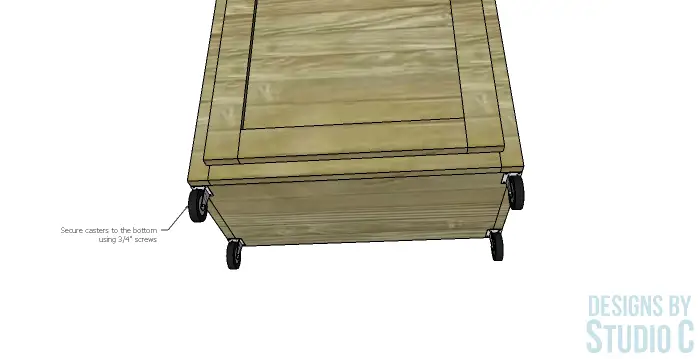
The tile can be glued to the top using a strong tile adhesive (grout is not necessary!).

Here’s another look at the finished cabinet:
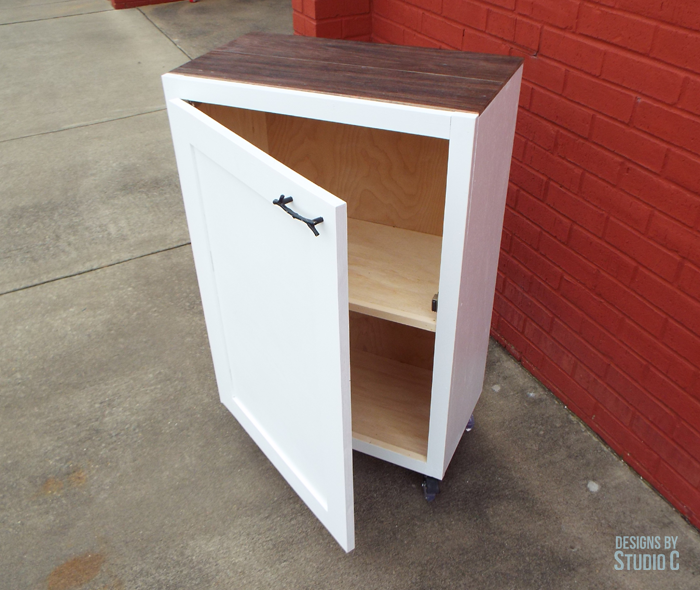
I painted it using Behr paint in Silky White, and reused hardware from the “old” kitchen. I also added a magnetic catch to keep the door closed.
This cabinet fits our needs perfectly! I can store other small cooking appliances inside, and the cabinet matches the other cabinets in the kitchen. Have questions about how to build a rolling storage cabinet? Leave a comment below!
Originally posted 2019-03-24 08:00:05.



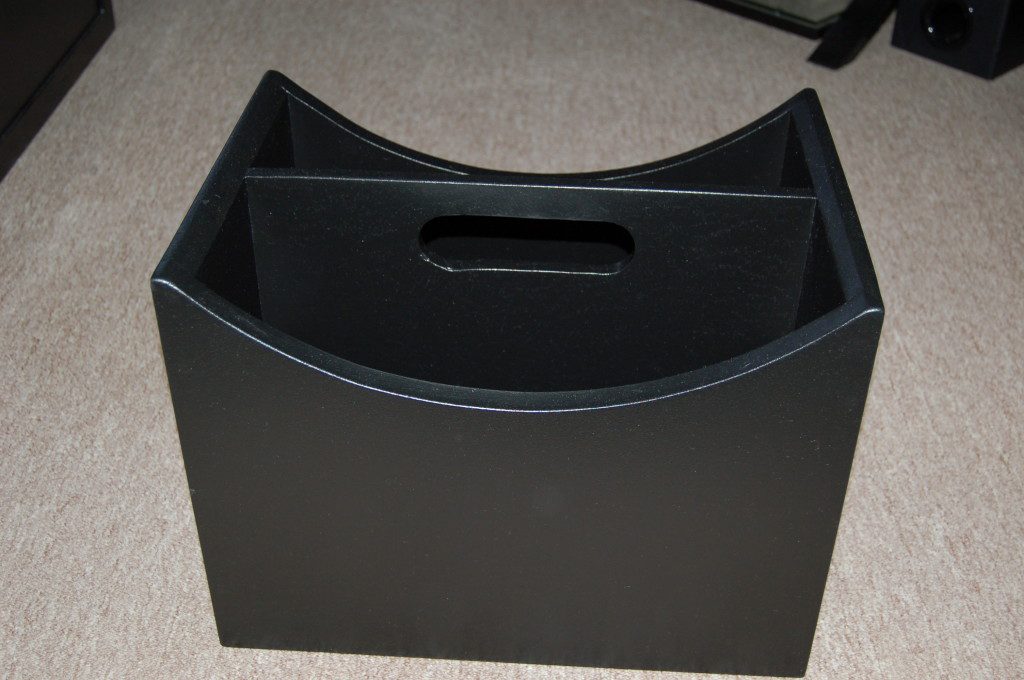

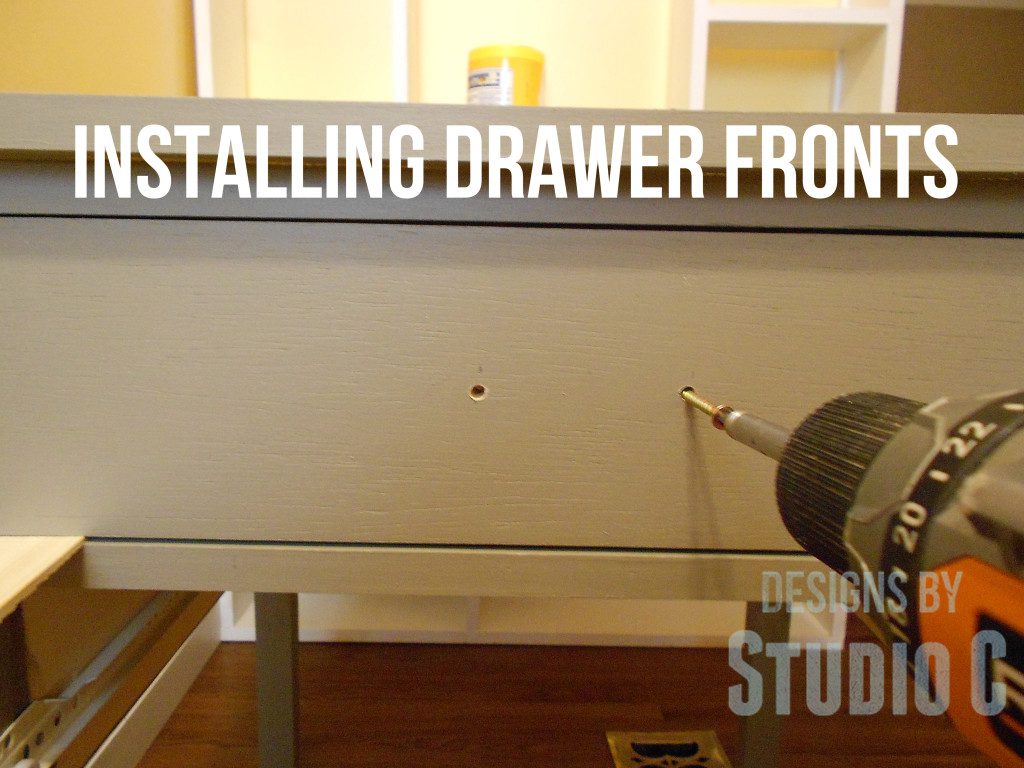
Comments are closed.